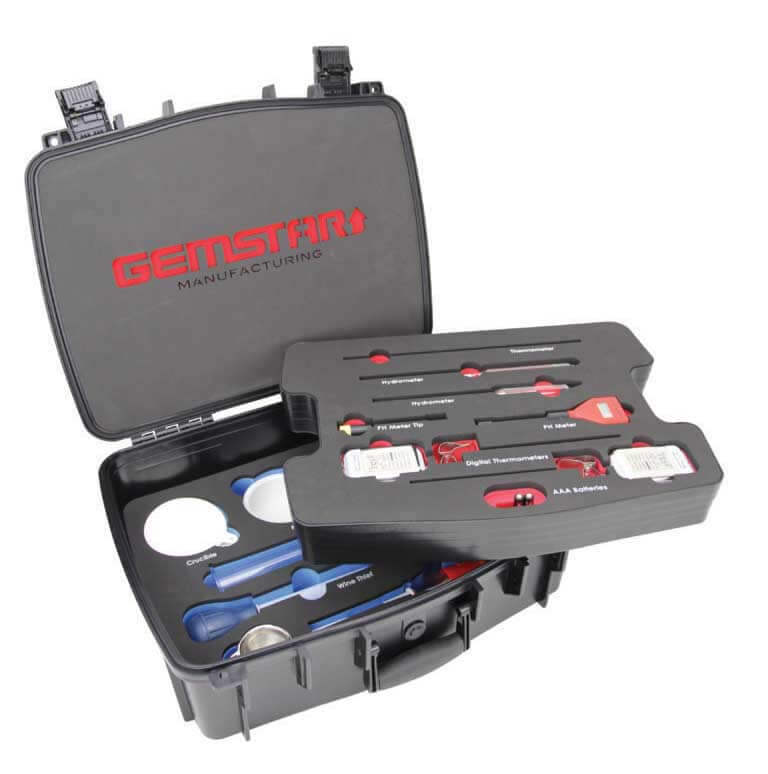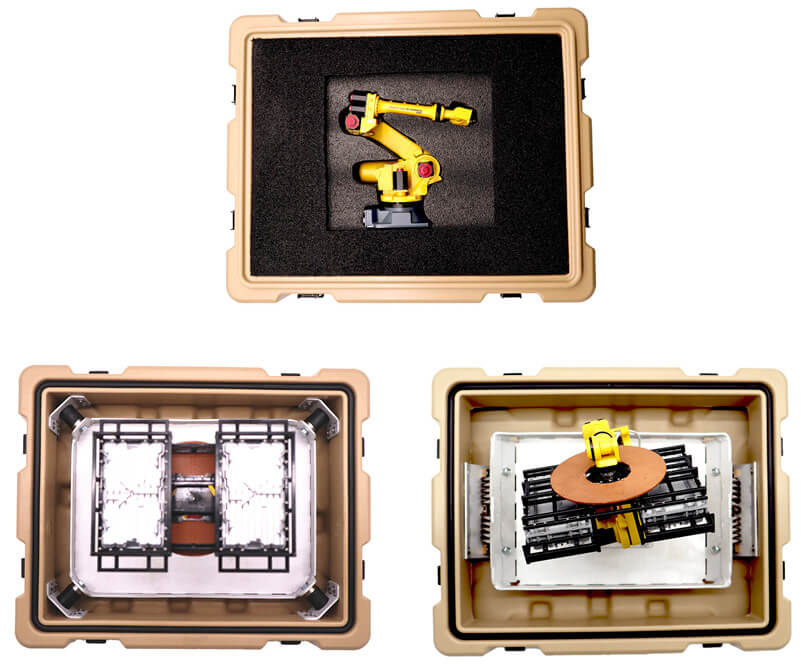
Design FAQ: Designing Case Interiors for Superior Usability
Q: When do I begin the process of designing a case interior for my transportable equipment?
A: For faster and more efficient market launches and better budgetary planning, we recommend you start designing your case early in the product design cycle to ensure a properly configured package. This is particularly necessary for highly sensitive and expensive equipment that needs intricate foam protection, such as military or aviation components, or for projects requiring venting or other accommodations beyond foam cushioning, such as interactive electronic testing equipment.
Q: Why can’t I just stuff a case with plenty of foam around my equipment?
A: Insufficient packaging will likely result in damage to the contents, which is a key consideration. On the flipside, there are also issues and risks of over-designing packaging to provide an unnecessarily high level of protection. For the user, over-design can be a source of recurring aggravation. The packaging could be bulkier to handle, heavier to move, more costly to ship, and more cumbersome to use. The cost will also be more than necessary, because the protective features are beyond what is required.
Q: Okay, so what are my primary concerns when I begin to select a case interior?
A: With the understanding that the optimal case provides all the protection needed in the most compact and lowest cost design, begin by outlining the key parameters, including who will be using the case, how it will be transported, and in what environmental conditions it will be used. This will allow you to step back and see which parameters contradict each other or which ones require a particularly creative solution in order to achieve them. Once this information is evaluated and decided upon, you are ready to consider the more critical requirements of materials and placement.
Q: Tell me more about what to look for when considering how the case will be used.
A: An example of usage might be when a bulky 20-pound aluminum case seems reasonable until the user needs to carry it through an airport. Another example is when you add wheels to a heavy case, then find that the user has to walk across a rocky terrain to get to the job site. Thinking about the interaction between contents and the user will help in your design process.
Q: Once I’ve worked all that out, what do I need to know about the interior selection?
A: Ultimately, the main goal of any packaging solution is to protect the contents. To calculate the right foam and thickness, consider three important characteristics of your parts—fragility, weight, and size.
Q: Weight and size I know, but how do I evaluate the fragility of my contents?
A: Fragility of the case contents can be defined in terms of G limit. The G force of an object is a measurement of acceleration due to gravity and expresses the point at which damage can occur. To determine the G limit, step velocity and step acceleration tests are conducted until damage occurs. This is not always feasible during product development due to timelines and costs. More often than not, the exact fragility is not known. In these instances you can use G ranges established for similar types of products. 



Extremely Fragile | 15-25 G’s
Special military applications, precision aligned test instruments
Very Delicate | 25-40 G’s
Mechanically shock mounted instruments and electronic equipment (shock mounts should be firmly secured prior to packaging and are provided for in-service protection only)
Delicate | 40-60 G’s
Aircraft accessories, computer equipment and other electronics
Moderately Delicate | 60-85 G’s
Video equipment, computer monitors
Moderately Rugged | 85-115 G’s
Equipment with minimal electronic controls
Rugged | 115 G’s and up
Machinery
Q: What more do I need to know about the weight and size of my parts?
A: First, the weight of the parts will help determine how the package will be handled in distribution. Heavier packages are less likely to be subjected to higher drops. Accordingly, sizes and weights are used by industry standards, such as ASTM 4169 and MIL-STD 810, to determine the height and frequency of drops to be used for validation testing. Second, weight and size are used to calculate PSI or static stress, a factor that will help select the type of foam to use. This is determined by taking an item’s weight, in pounds, divided by the square inches of each side of the item. It’s also best to hold the parts on their largest and flattest sides to minimize static stress. You don’t want all the weight of the part to be distributed on its smallest and most vulnerable side during a drop.
Q: Is there a way to calculate how much foam I need?
A: Each foam type and density has its own cushioning curve, which is used to illustrate optimum performance based on G limit, weight, and drop heights. These curves help establish the foam thickness you need. In general, PSI is used to determine your foam density. Three common foam types are:
0.1-0.3 PSI – 2 lb./ft.3 polyurethane
0.4-0.6 PSI – 4 lb./ft.3 polyurethane
0.7-1.0 PSI – 2 lb./ft.3 polyethylene
The foam design needs careful consideration to maximize storage and protection while staying within the limitations of foam fabrication, such as minimum wall thickness of foam between parts.
Q: Is foam the only option for holding my parts in a case?
A: Foam is the most common option and can be quite effective for protection. However, it may not be the best option for your application or for every part going into the case. For example, a formed plastic interior is best for durable applications where cleaning is an issue. A literature pocket can be used for print collateral that needs no protection, or straps and hinged compartments can be employed throughout to maximize storage.

Sentinel® 1116-6, fire rated material, with custom thermoformed panel mount and IP-rated connectors



